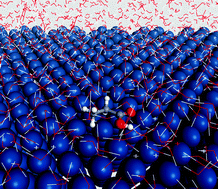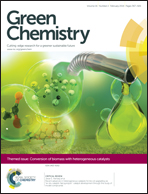Solvent effects on the hydrodeoxygenation of propanoic acid over Pd(111) model surfaces
Abstract
The effects of liquid water, n-octane, and n-butanol on the hydrodeoxygenation of propanoic acid over Pd(111) model surfaces have been studied from first principles. We developed a microkinetic model for the hydrodeoxygenation and studied the reaction mechanism at a temperature of 473 K. Our model predicts that for all reaction media, decarbonylation pathways are favored over decarboxylation pathways. However, in the presence of polar solvents like water, decarboxylation routes become competitive with decarbonylation routes. The activity of the Pd surface varies as a function of the environment as follows: water > n-butanol > octane ≈ gas phase. Finally, a sensitivity analysis of our models suggests that both C–OH and C–H bond cleavages control the overall rate of the catalyst in all environments and are likely to be activity descriptors for the hydrodeoxygenation of organic acids.

- This article is part of the themed collection: Conversion of biomass with heterogeneous catalysts

 Please wait while we load your content...
Please wait while we load your content...